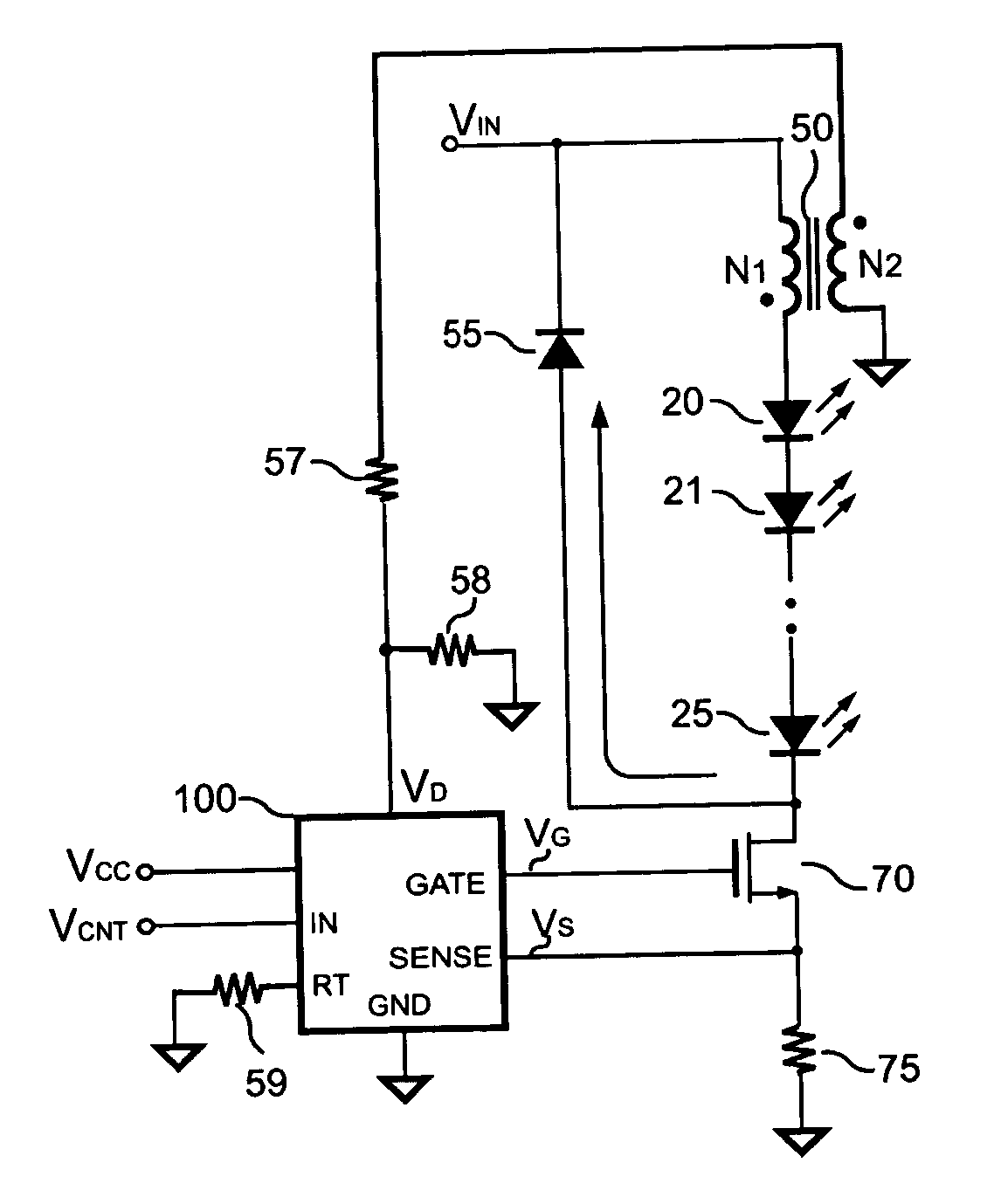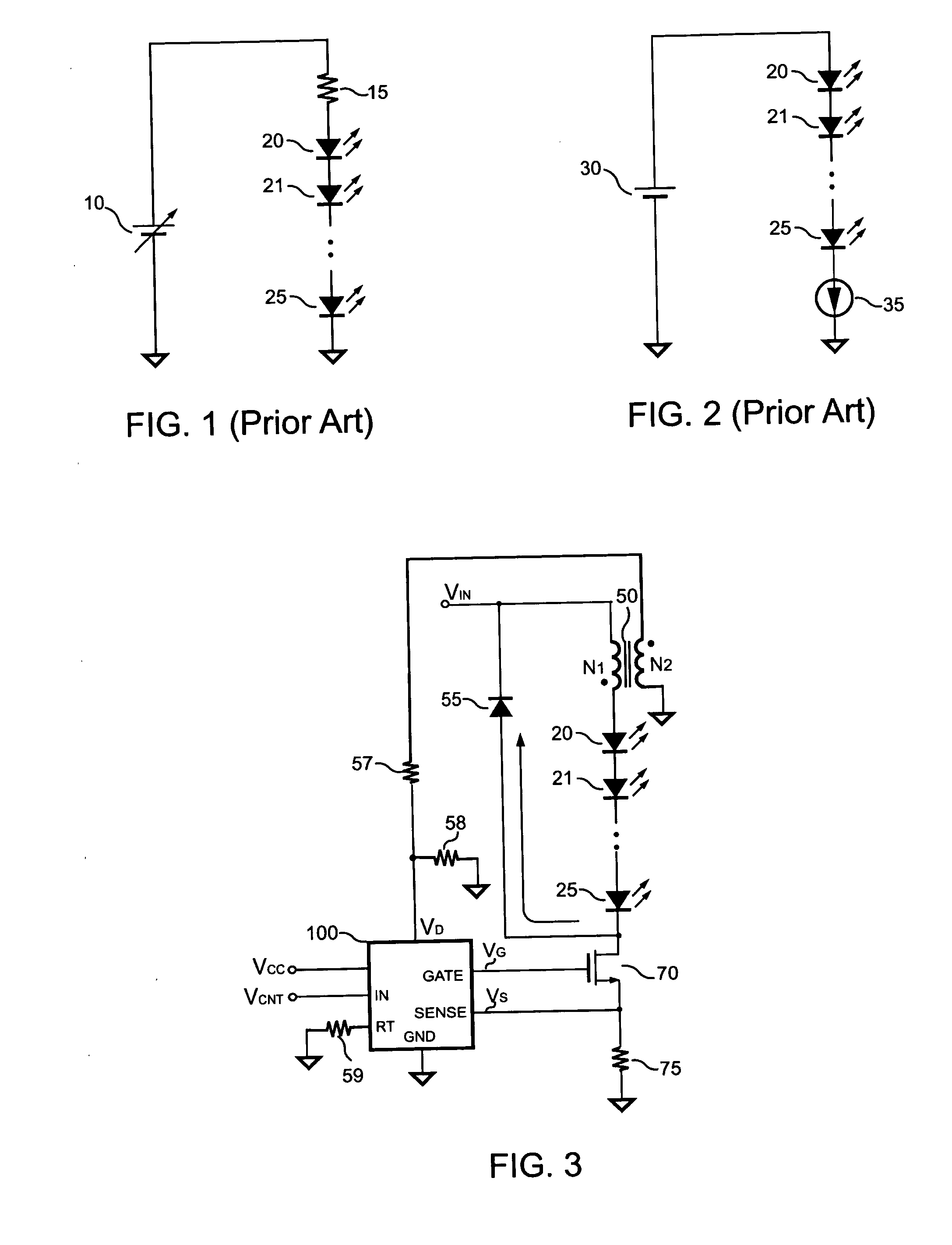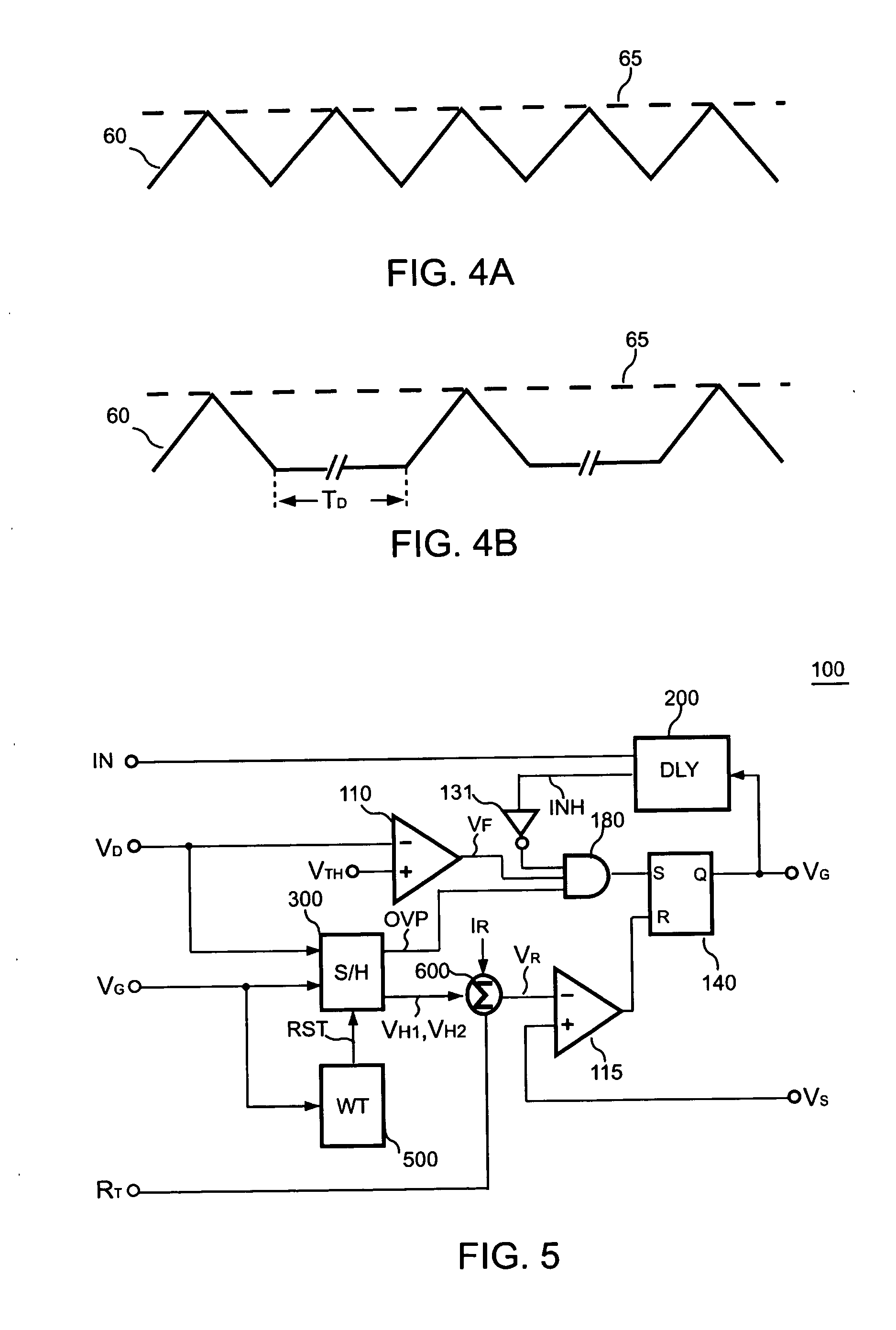Switching LED driver
- Summary
- Abstract
- Description
- Claims
- Application Information
AI Technical Summary
Benefits of technology
Problems solved by technology
Method used
Image
Examples
Embodiment Construction
[0020]FIG. 3 shows a switching LED driver in accordance with present invention, in which a first winding N1 of a inductor 50 is coupled in series with the LEDs 20˜25. The first winding N1 of the inductor 50 includes an inductance. Further, a switch 70 is connected in series with the LEDs 20˜25 and the first winding N1 of the inductor 50 for controlling the LED current. The LED current is further converted to a current signal VS coupled to a control circuit 100 via a resistor 75. The control circuit 100 is further coupled to a second winding N2 of the inductor 50 to receive the reflected signal of the inductor 50 through resistors 57 and 58. A diode 55 is coupled in parallel to the LEDs 20˜25 and the inductor 50. Once the switch 70 is turned off, the energy of the inductor 50 is discharged through the LEDs 20˜25 and the diode 55. Meanwhile the forward voltage of the LEDs 20˜25 is reflected to the secondary winding N2 of the inductor 50. Therefore the reflected signal of the inductor ...
PUM
 Login to View More
Login to View More Abstract
Description
Claims
Application Information
 Login to View More
Login to View More - R&D
- Intellectual Property
- Life Sciences
- Materials
- Tech Scout
- Unparalleled Data Quality
- Higher Quality Content
- 60% Fewer Hallucinations
Browse by: Latest US Patents, China's latest patents, Technical Efficacy Thesaurus, Application Domain, Technology Topic, Popular Technical Reports.
© 2025 PatSnap. All rights reserved.Legal|Privacy policy|Modern Slavery Act Transparency Statement|Sitemap|About US| Contact US: help@patsnap.com



